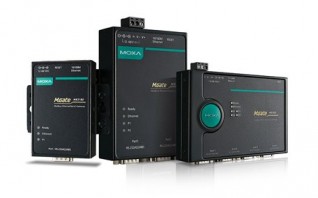

- #Masteropc universal modbus server manual#
- #Masteropc universal modbus server software#
- #Masteropc universal modbus server code#
Now the signal will instead use the specified slave address as opposed to the value of 255 which was used when the signal was initially set up.Push the "Play" button to run this little program that you just made.All other arguments must then match exactly the values you set up under step 1. you want to change the slave address of your signal to 25, enter 25 as the second argument to the command. When using the script command to add Modbus signals, you have the opportunity to specify a custom slave address.
#Masteropc universal modbus server manual#
In the text field, enter the script command "modbus_add_signal()", which takes arguments as described in the script manual found under Download.Press "Script Code", and select the Command tab.Select the Advanced tab from the Structure menu.Use either the above method or the below method. Using the URScript language to change the slave address. Check the "Show advanced options" checkbox and edit the MODBUS Slave Address field to set your slave address.As an example you might add an output signal named "out1" with IP address "154.140.1.12" and signal address "203". When this is done, the signal connection will use default slave address 255. Add the Modbus signal to your installation, specifying its IP address, signal address, signal type and name.Using the MODBUS Client setup screen on Polyscope In case you need the slave address for some signal to be set differently follow either of the methods below, depending on your comfort level. Since the slave address is not always needed, it is set to a default value of 255. There might be circumstances in which it is essential to be able to set specific slave addresses (slave number, slave ID) for the Modbus signals that you have set up by e.g. This is a simple to implement solution that works with the robots existing firmware. Remember to add a ”sync()” function into the thread to insure proper scheduling on the UR’s CPU. In the program thread on the UR the assignment command will look like pick_pos:=read_port_register(155). For example under installation -> variables, create a new variable called, pick_pos. The thread simply uses the UR Assignment command to read a MODBUS value into the program’s memory space. In an example case we set-up a thread in the UR with a simple 2 way-point program and documented expected transfer speeds (i.e. The commands on the UR are read_port_register(address) and write_port_register(address,value). consider the limit of communications to be 128 registers). UR registers 128-255 are general purpose registers that can be used for data transfer (i.e.

To implement UR as MODBUS Slave simply set the Robot’s IP address as needed on the UR’s set-up screen. When running without a Proface, the Trio can then be the master and the UR the slave.
#Masteropc universal modbus server code#
In this case you will have some code in ladder/Proface script to copy memory between the UR and Trio. When running the UR with both a Proface and Trio on the same application, the Proface should be the master to both the Trio and UR.

When running the UR on MODBUS, we recommend using the UR as MODBUS SLAVE. Both the Trio and the Proface can operate as MODBUS Master. This example can be used for both CB2 and for CB3
#Masteropc universal modbus server software#
Note that older or newer software versions may behave differently.


 0 kommentar(er)
0 kommentar(er)
